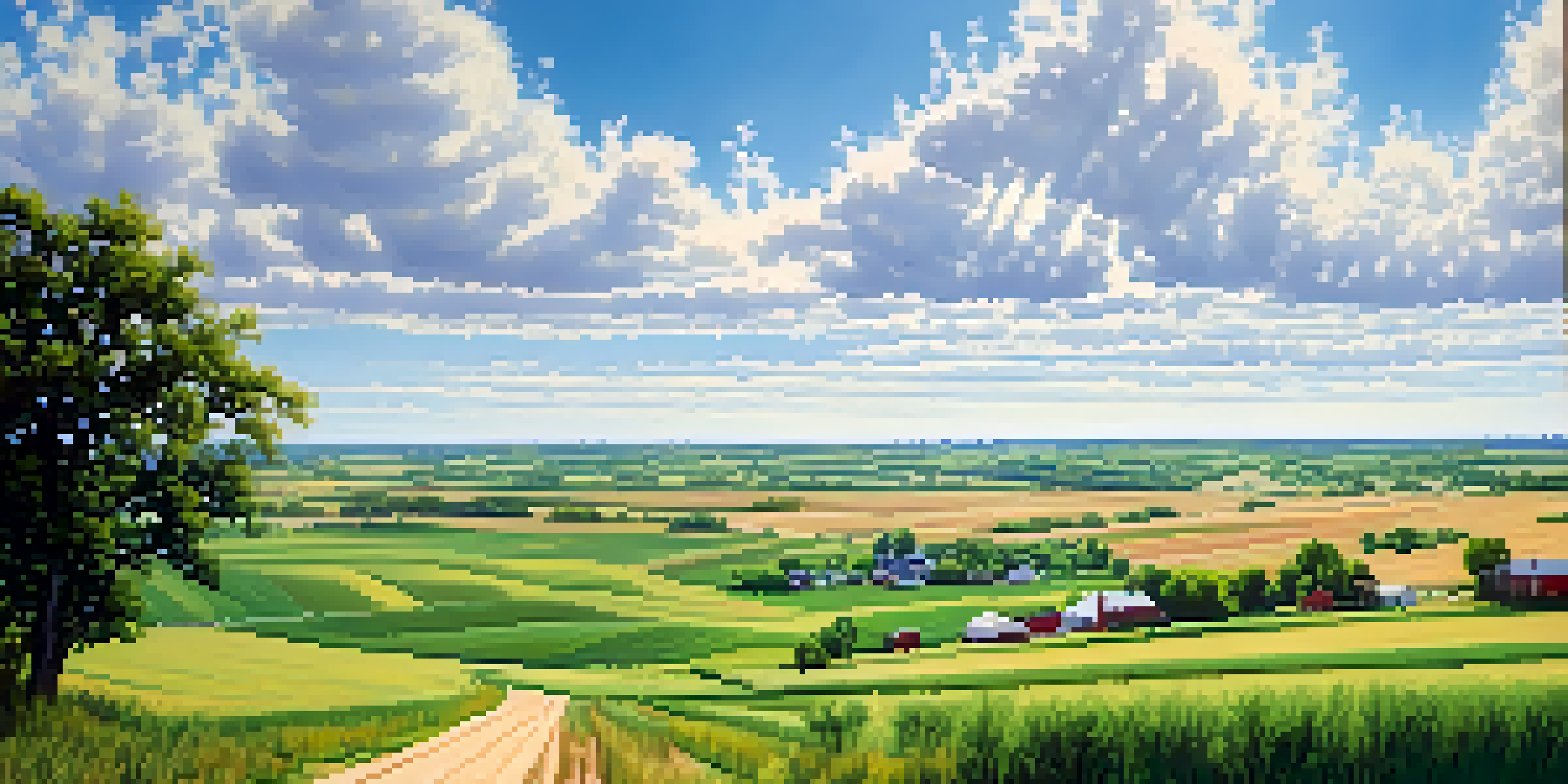Rainfall Patterns in Kansas: Insights and Impacts

Overview of Kansas' Climate and Rainfall Patterns
Kansas experiences a continental climate, characterized by distinct seasonal changes. Rainfall is crucial for the state's agriculture, but its patterns can vary significantly across regions. The state typically sees an average annual precipitation of about 30 inches, but some areas can receive much less or more. Understanding these patterns helps farmers, policymakers, and residents prepare for both droughts and floods.
Seasonal Variations in Rainfall Across Kansas
Rainfall in Kansas is not evenly distributed throughout the year, with most precipitation occurring in spring and early summer. This seasonal pattern aligns with the growth cycles of many crops, which depend on adequate moisture during these key months. However, fall and winter can also bring unexpected rain or snow, impacting the overall water supply. Recognizing these seasonal shifts is vital for effective agricultural planning.
Kansas Climate: A Seasonal Snapshot
Rainfall in Kansas varies significantly by season, with most precipitation occurring in spring and early summer, which is critical for crop growth.
Regional Differences in Rainfall: East vs. West Kansas
The eastern part of Kansas typically receives more rainfall than the western regions, creating distinct agricultural landscapes. While eastern Kansas enjoys lush pastures and abundant crops, western Kansas often faces drier conditions, which can lead to challenges like drought. This disparity influences not only farming practices but also the types of crops that can thrive in each area. Understanding these regional differences is essential for local farmers and land management.
Impact of Climate Change on Rainfall Patterns
Climate change is reshaping rainfall patterns across Kansas, leading to more unpredictable weather events. Increased temperatures can intensify evaporation, reducing soil moisture and affecting crop yields. Additionally, the state may experience more frequent and severe storms, resulting in flooding and erosion. It's crucial for communities to adapt and develop strategies to cope with these changing conditions.
Regional Rainfall Disparities Matter
Eastern Kansas typically receives more rainfall than the west, influencing agricultural practices and crop viability across the state.
The Role of Rainfall in Agriculture and Food Production
Rainfall is a lifeline for Kansas agriculture, influencing everything from crop selection to harvest timing. Farmers rely on consistent rainfall for growing wheat, corn, and soybeans, among other crops. Fluctuations in rainfall can lead to crop failures or diminished yields, impacting local economies and food supply. Understanding these dynamics allows farmers to make informed decisions about irrigation and crop rotation.
Rainfall and Its Influence on Water Resources
The patterns of rainfall directly impact the availability of water resources in Kansas. Rivers, lakes, and reservoirs depend on consistent rainfall to maintain healthy water levels. During dry periods, water sources can dwindle, leading to restrictions and heightened competition for water use. Managing these resources effectively is essential for both urban and rural communities.
Adapting to Climate Change Challenges
As climate change alters rainfall patterns, Kansas must develop adaptation strategies to ensure agricultural sustainability and water resource management.
The Effects of Extreme Weather Events on Rainfall
Kansas is no stranger to extreme weather events, including heavy rains, tornadoes, and droughts. These events can drastically alter typical rainfall patterns, leading to sudden flooding or prolonged dry spells. Communities often face challenges in disaster preparedness and recovery, highlighting the need for robust infrastructure and planning. Resilience in the face of such unpredictability is vital for the state's future.
Future Outlook: Adapting to Changing Rainfall Patterns
As Kansas grapples with evolving rainfall patterns, adaptation strategies will be critical for sustainability. This includes investing in water conservation techniques, improving drainage systems, and enhancing crop resilience. Education and community engagement will also play a significant role in preparing for future changes. By proactively addressing these issues, Kansas can better safeguard its agricultural heritage and natural resources.